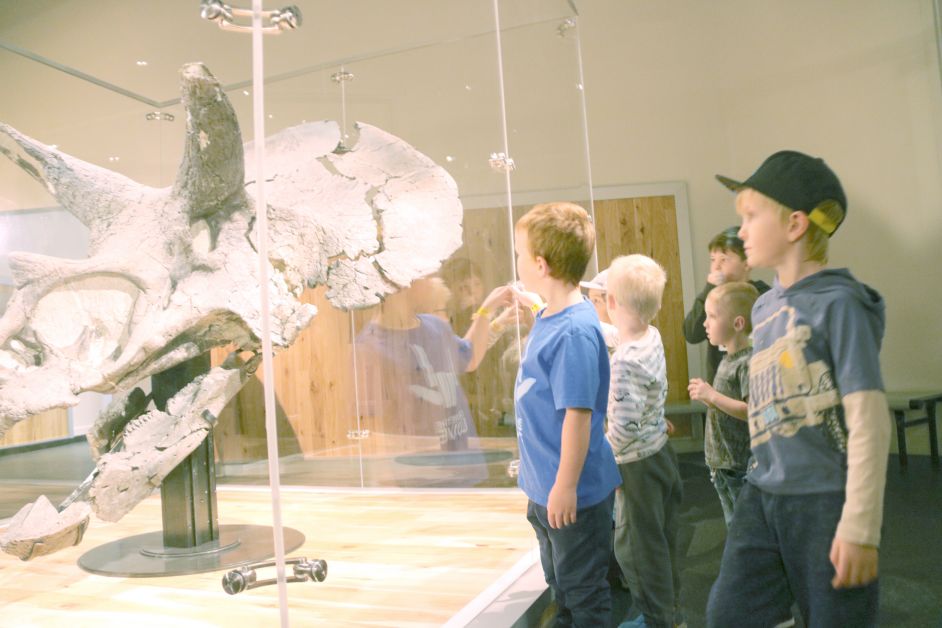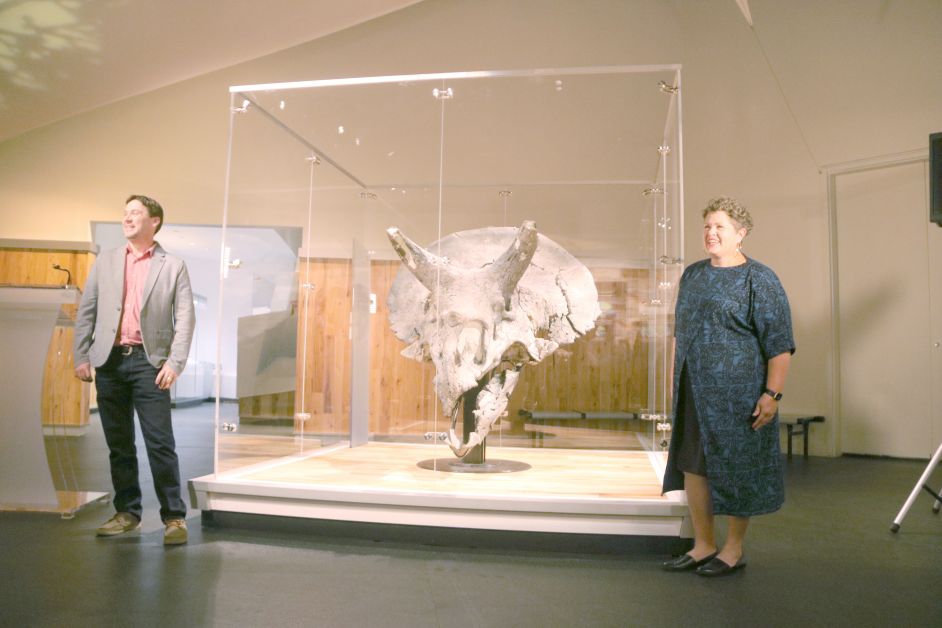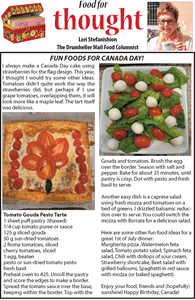
The Royal Tyrrell Museum’s latest installation of Fossils in Focus, features Canada’s most complete Triceratops skull, collected in Southern Alberta.
The exhibit opened on Thursday, October 5, and “Calli” the Triceratops takes centre stage on a 360-degree display.
“Triceratops is one of the most iconic and recognizable dinosaurs in the world. It was one of the first dinosaurs we had found, and we had a really good idea of what it looked like. We had complete skulls, and because of that, it was instrumental in shaping our real understanding of dinosaurs and what they looked like,” said Curator of Dinosaur Systematics and Evolution, Caleb Brown. “The Tyrrell Museum has an amazing dinosaur collection from the late Cretaceous, one of the best in the world, but until recently, we have not had an original Triceratops skull, so this is exciting news for us.”
The skull was discovered by Tyrrell Technicians in Southern Alberta along Callum Creek, a tributary of the Oldman River, following the flood of 2013.
“The Tyrrell Museum started a Southern Alberta flood mitigation palaeontology program. The idea was, we would go out and systematically survey those rivers that had seen flooding. We would go back to known sites to assess the damage, and see what condition they are in, but also to go out and find new sites that might have been exposed through all of the erosion from the flood. This was done over several years, and they found over 200 sites.”

He notes these weren’t the classic Badlands kind of sites. These were more often river valleys in the Foothills with more vegetation in forested areas.
“Historically, we haven’t done as much work in these areas as well,” he said.
He notes the skull has a darker hue than many fossils found in the Badlands. It looks much like “Black Beauty,” a Tyrannosaurus fossil discovered in Southern Alberta.
“Because of the unique geology down there, the colour of the fossil is different from what we’re used to seeing,” said Brown. ”This one’s a jet black colour, so it’s quite dramatic in how it looks.”
Calli was discovered in 2014, and collected in the fall of 2015. A helicopter was needed to transport the skull from the site.
The job for technician Ian Macdonald over the next seven years and 6,500 hours was to remove 815 kilograms of rock to expose the skull.
“When it is a single specimen, it is often one individual because they understand the animal, they understand the rock and the anatomy,” said Brown.
Once completed, he worked with blacksmiths to build a mount to allow visitors to get a full 360-degree view of the specimen.
“In terms of the collection, the preparation and mounting, it is actually one of the biggest technical challenges our museum has had. So we are very proud to unveil it to the public,” said Brown.
Calli is just one of the new additions to Fossils in Focus, which is updated every fall to feature the latest significant findings and new research.



























